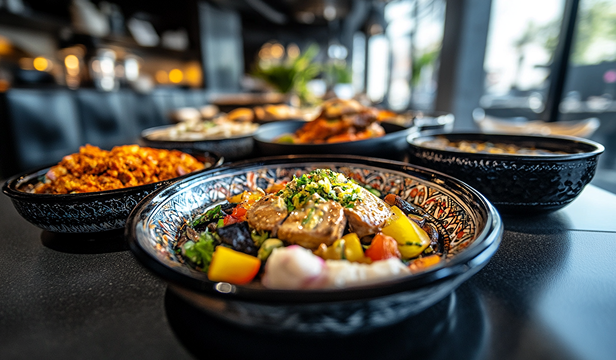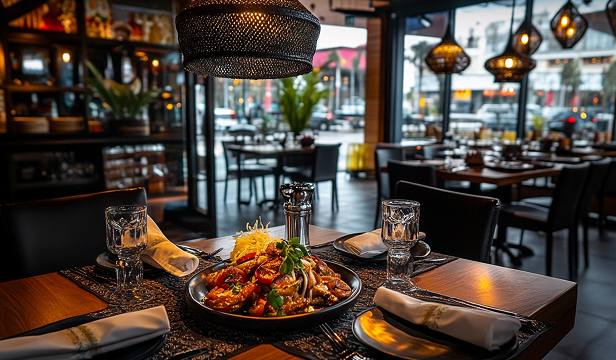Introduction Middle Eastern art is renowned for its intricate patterns, rich colours, and deep cultural…

The History of Hand-Painted Ceramics in Middle Eastern Dining
Introduction
Hand-painted ceramics have been an integral part of Middle Eastern dining culture for centuries. These intricately designed pieces not only serve a functional purpose but also carry deep artistic and cultural significance. From ancient Mesopotamian pottery to the exquisite Iznik ceramics of the Ottoman Empire, Middle Eastern ceramic traditions continue to shape contemporary dining experiences.
Origins of Middle Eastern Ceramics
The art of pottery-making in the Middle East dates back over 7,000 years, with some of the earliest examples found in Mesopotamia (modern-day Iraq). Early civilizations such as the Sumerians, Babylonians, and Persians developed advanced techniques for shaping and glazing pottery, often incorporating intricate hand-painted motifs.
Key characteristics of early Middle Eastern ceramics include:
- Geometric and floral patterns influenced by Islamic art principles.
- Calligraphic inscriptions, often featuring poetry or religious texts.
- Use of cobalt blue and turquoise glazes, which became defining colours in later ceramic traditions.
Development During the Islamic Golden Age
Between the 8th and 14th centuries, Islamic ceramic art flourished, with influences spreading across the Middle East, North Africa, and parts of Europe.
- Abbasid Ceramics (8th-13th century): Baghdad emerged as a major centre for ceramic production, with artisans experimenting with lusterware—a technique that gave pottery a metallic sheen.
- Persian Ceramics (12th-15th century): Persian potters introduced intricate miniature paintings and sgraffito techniques, which involved carving patterns into the surface before glazing.
- Mamluk and Fatimid Periods: Egyptian and Syrian ceramics from this era featured intricate inlaid designs and were often used in palaces and mosques.
Ottoman Influence and Iznik Ceramics
During the 15th and 16th centuries, the Ottoman Empire played a crucial role in elevating the craftsmanship of hand-painted ceramics.
- Iznik Ceramics (15th-17th century): Originating from the town of Iznik in Turkey, these ceramics became renowned for their vivid blue, red, and green hues on a white background. The motifs often included tulips, pomegranates, and arabesque patterns.
- Tableware and Dining Traditions: Iznik pottery was widely used in Ottoman court dining, where elaborate feasts were served on intricately designed plates and bowls.
Middle Eastern Ceramics in Contemporary Dining
Today, hand-painted ceramics continue to be a vital part of Middle Eastern dining culture. Artisans across the region, from Morocco to Iran, preserve traditional techniques while infusing modern aesthetics into their designs.
- Modern Adaptations: Many contemporary ceramic artists blend historical motifs with contemporary styles, creating tableware that suits both traditional and modern dining spaces.
- Revival of Traditional Methods: Handmade pottery workshops across the Middle East and beyond keep the legacy alive, ensuring that the art form is passed down through generations.
- Integration into High-End Dining: Many fine-dining establishments in the Middle East incorporate hand-painted ceramic plates and serving dishes to enhance the dining experience, reflecting the cultural heritage of the cuisine.
Conclusion
The history of hand-painted ceramics in Middle Eastern dining is a testament to the region’s rich artistic heritage and craftsmanship. From ancient Mesopotamian pottery to the iconic Iznik ceramics of the Ottoman Empire, these beautifully crafted pieces continue to bridge the past and present, making every meal a celebration of culture and tradition. Whether used in traditional feasts or modern gourmet experiences, hand-painted ceramics remain an essential element of Middle Eastern dining aesthetics.



